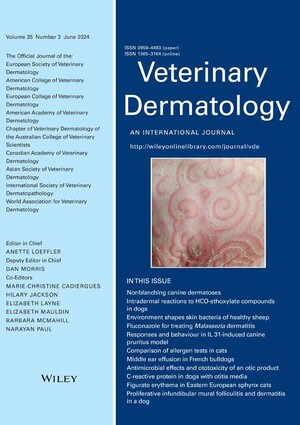
A cross-sectional survey of the knowledge, attitudes, and practices of antimicrobial users and providers in an area of high-density livestock-human population in western Kenya
Abstract
Background: Antimicrobial resistance (AMR) is one of the most important global health crises in recent times and is driven primarily by antimicrobial consumption. In East Africa, there is a paucity of data regarding the knowledge, attitudes, and practices (KAP) related to antimicrobial use (AMU). We investigate the ways in which antimicrobial users in the veterinary sector accessed veterinary antimicrobials, and common behaviors of veterinary antimicrobial users and prescribers associated with AMU and AMR. Methods: In total, 70 farmers, staff at 49 agricultural-veterinary antimicrobial shops (agrovet staff) and 28 veterinary animal healthcare workers or veterinary surgeons (veterinary professionals) were interviewed in Busia county, western Kenya in 2016 using a standard questionnaire as a framework for structured interviews. Data recorded included participant demographics, level of education, access to and sources of veterinary antimicrobials, prescribing patterns, and knowledge of AMR and antimicrobial withdrawal periods. Results: The majority of antimicrobials were accessed through informal means, purchased from agroveterinary shops; more than half of staff did not hold nationally mandated qualifications to advise on or sell veterinary antimicrobials. Approximately 40% of veterinary antimicrobials were sold without a prescription and it was noted that both price and customer preference were important factors when selling antimicrobials in almost all agrovet shops. Knowledge of the dangers associated with AMR and AMU were mostly superficial. Treatment failure occurred often, and there was a lack of differentiation between AMR and simply treatment failure. Conclusion: In this study area in East Africa with high-density human and livestock populations, AMU was primarily for maintenance of livestock health. These findings have highlighted several aspects surrounding inappropriate access to antimicrobials, and as such require attention from policy makers concerned with AMR in both livestock and human medicine sectors. Improving prescribing practices and ensuring a minimum level of general education and awareness of prescribers, as well as expanding the role of agrovet staff in antimicrobial stewardship programmes, may help begin to mitigate the maintenance and transmission of AMR, particularly amongst livestock.
Citation
Kemp, S.A., Pinchbeck, G.L., Fèvre, E.M. and Williams, N.J. 2021. A cross-sectional survey of the knowledge, attitudes, and practices of antimicrobial users and providers in an area of high-density livestock-human population in western Kenya. Frontiers in Veterinary Science 8: 727365.










